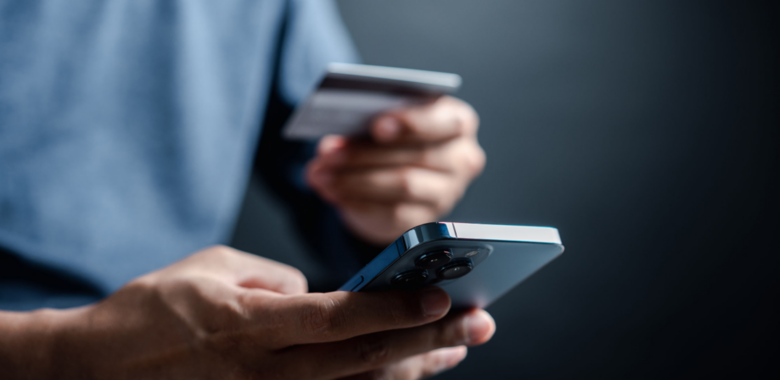The mobile app is the new bank branch.
With an installed base of more than three billion iOS and Android smartphones, the mobile banking app has become the main channel for consumers to interact with their bank. In less than a decade, services beyond the simple balance verification emerged, such as check deposits, statements review, bill payments, money transfers, new account opening, setup of new beneficiaries, P2P money transfer, and many more.
Mobile wallets embedded into the mobile banking app, with a portfolio of payment, loyalty, transport and ID solutions, emerged as did new mobile payment options using acceptance networks like optical with QR codes. These new innovations enriched the mobile banking app, driving usage and traffic. In fact, the mobile banking app has captured all the innovations of the last decade but one: near-field communication (NFC).
The rise of OEM payments
Since October 2014 when Apple Pay first launched in the U.S., followed by Samsung Pay and Google Pay, more than one billion cardholders have enrolled at least one payment card into an OEM wallet to perform in-store, NFC tap payments, or in-app and in-web payments. Looking at iOS devices, the card emulation mode of the NFC stack is only accessible via the Apple Wallet app, ensuring a great Apple user experience. However, this prevents banks from deploying their own wallet from their mobile app and with local, market specific functionalities that could fit the bank’s market blueprint.
Android devices offer the flexibility needed to access and use the NFC stack in its card emulation mode, but the diversity of security frameworks from brand to brand makes it more difficult for banks to reach all their customers. Google’s Host Card Emulation (HCE), a software mock-up of a hardware secure element, has been the only possible path to implement a mobile wallet using the NFC stack on Android devices to date. Beyond the technical considerations, the market has mainly suffered from a lack of innovative services to help bring a credible, challenging alternative to OEM Pay. This might be about to change.
The devil is in the details
OEM Pay delivers a Tap&Pay contactless card-like experience via smartphones. That alone is great, but we believe there is room for more personalised user experiences that are closely aligned with local markets’ needs. Banks own this local market knowledge and could be the ideal prime audience to deploy an innovative mobile payment journey.
Here are four applications that could be embedded with other services into the mobile banking app for an optimal mobile payment journey:
Tipping: Just like the Uber app offers a ‘+Tip’ button on top of the card-on-file payment, a smart customisation of the app user interface would be to transform Tap&Pay into Tap + Tip &Pay. This type of customer need and behaviour highly varies from one market to another. In the U.S. for example, tips are second nature for customers, but in other countries like Japan and China, tipping isn’t commonplace. With fewer people carrying cash today, having the Tap + Tip option would provide a quick and convenient way to pay gratuity.
Splitting: App payment providers want to make it as easy and frictionless as possible for customers to pay. Most of us have been in a situation where a group of people try to split the bill in a restaurant. Processing multiple individual payments can take a long time for the merchant, and is cumbersome for the diners. What if there was a “split” button prior to tapping on one of the guest’s banking apps? One person would be able to perform a Tap&Pay for the amount in full, saving time and hassle for the merchant and the guests. The rest of the group would then perform a NFC P2P payment of equal amounts toward the total to the person who paid.
Credit & Debit selection: The transaction amount can trigger a decision of whether to either use a credit or debit card. The mobile banking app could capture the transaction amount through the first tap, and then assist the customer by offering them a choice between debit and credit card prior to the second Tap&Pay. The innovation here is the “capture amount” function prior to Tap&Pay, which does not have to be done via NFC. Instead, it could be performed using other technologies such as Bluetooth so that it doesn’t make the user journey more complex. Capturing the amount prior to the payment transaction opens a range of services using the mobile banking app.
P2P, smartphone-to-smartphone payment: While most people are familiar with NFC’s “Card Emulation Mode”, made popular by leading OEM Pay providers, it also consists of two more communication modes that could be hugely beneficial for users. One of them is the “reader” mode that allows smartphones to read NFC tags, which could be used as an alternative to QR codes to build a payment acceptance network. The other one is a “P2P” mode that allows two smartphones to communicate when within a one-inch distance. P2P payments with back-to-back smartphones could be a very innovative mobile banking service to perform for payments among friends, for example.
The mobile banking app can be the home to a variety of innovative and personalised payment services triggered by NFC card emulation, reader or P2P modes, and also optical QR codes. While there are a lot more possibilities that could enrich banks’ mobile apps to reflect local market needs, only usage within different markets would tell which ones are pertinent and will survive. It’s time for BankPay (mobile payment branded by banks) to bring the second and third billion users to the convenience of digital, mobile payments.
What other services would you be keen to see enabled by mobile banking apps? Let us know in the comments below of by tweeting us @ThalesDigiSec.



